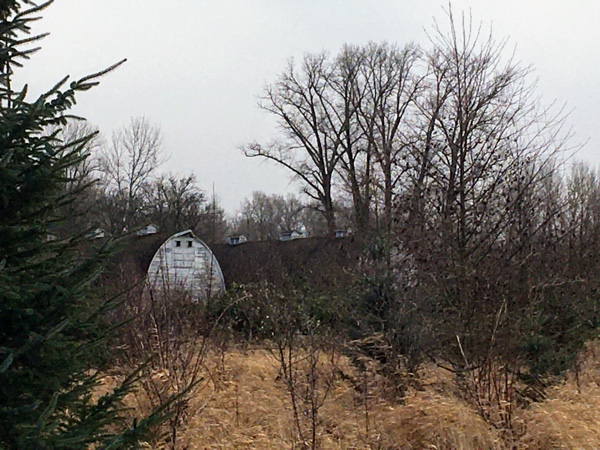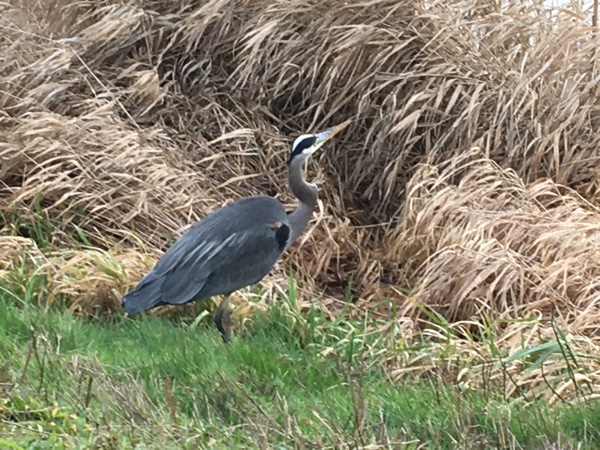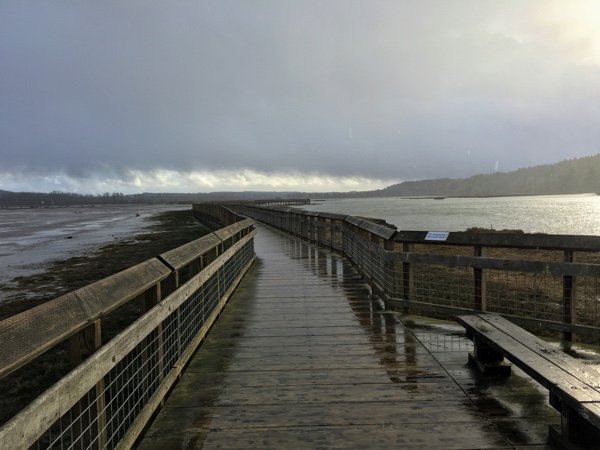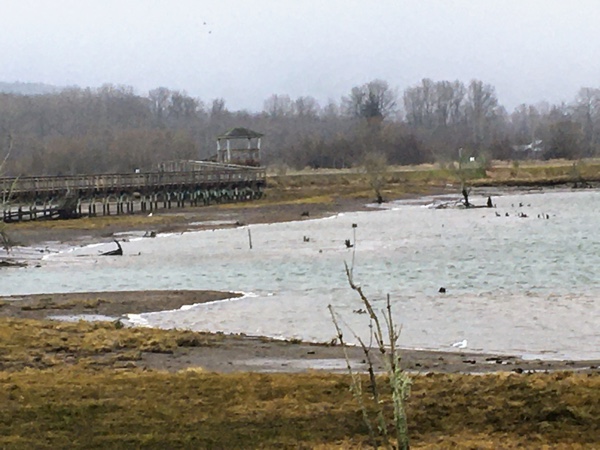
Sunday, January 12, 2020
I met a friend for a hike at the Billy Frank Jr. National Wildlife Refuge this afternoon. This place holds a special significance in my life: I spent the summer of 1978 helping to restore the Nisqually Delta, as it was known at that time, as a member of a Youth Conservation Corps. And although I kayaked McAllister Creek and some of the delta’s sloughs this past summer, this is the first time since 1978 that I had set foot inside the refuge.
 Driving into the refuge was a little odd. The refuge felt familiar, but everything looked different, beginning with the paved road, which I remembered as gravel. I recognized some of the side roads, now blocked with gates. The visitor center was a new addition, too. I pulled into the parking lot and met up with my friend just in time for a double rainbow to grace the sky.
Driving into the refuge was a little odd. The refuge felt familiar, but everything looked different, beginning with the paved road, which I remembered as gravel. I recognized some of the side roads, now blocked with gates. The visitor center was a new addition, too. I pulled into the parking lot and met up with my friend just in time for a double rainbow to grace the sky.
She hiked here quite a bit, so she led the way down the weathered boardwalk toward the twin barns. I had worked on those barns in 1978. They were old even then, and the boards were coming loose. I had spent many happy days pulling old, rusty nails, replacing them with new. The barns were the only things that looked unchanged, down to the chipped and peeling white paint.
The boardwalk wound its way between tall alders on the left and a freshwater slough on the right. I’m pretty sure when I was here last, this area was dry. But, the five-mile long dyke, which had turned the wetland into a huge cow pasture, is now gone. It had been removed in 2009, allowing wetlands to reclaim the pasture.
At the twin barns, we headed out on the gravel estuary trail, dodging puddles from the recent weeks of rain. Birds were everywhere. My friend pointed out some to me, but I don’t remember any except the herons. According to my guidebook, Urban Trails Olympia, the refuge is home to eagles, dunlins, sandpipers, falcons, merlins, purple martins, and geese, as well as seagulls, herons, and crows. In addition, there are seals, salamanders, and other creatures, but sadly, we didn’t see any of these.
The gravel trail soon turned into a very long boardwalk that snaked its way out into the tidal mudflats along McAllister Creek. The tide was way out, out further than it had ever been when I kayaked in this area this past summer. The mudflats went out for miles toward Anderson Island, across the Nisqually Reach Aquatic Reserve portion of Puget Sound. We could see the Tacoma Narrows Bridge in the distance.
 I’m not sure how long the boardwalk is that goes out over the mudflats, but I’m guessing it’s pretty close to a mile. We weren’t quite able to go out all the way to the end because it’s blocked off during hunting season, but we were able to go out most of the way. From the visitor center to the the gate where we turned around is just short of two miles. Being able to walk to the end would have added about another quarter mile.
I’m not sure how long the boardwalk is that goes out over the mudflats, but I’m guessing it’s pretty close to a mile. We weren’t quite able to go out all the way to the end because it’s blocked off during hunting season, but we were able to go out most of the way. From the visitor center to the the gate where we turned around is just short of two miles. Being able to walk to the end would have added about another quarter mile.
In addition to the estuary trail, which we took, the refuge also has a shorter trail called the Twin Barns Loop. This trail is only about a mile long.
All of the trails in the refuge are flat and ADA wheelchair accessible, so this is a good place for small children and people with mobility issues, as well as anyone else who wants to just get out and commune with nature for a bit. Binoculars are a good idea, and if you don’t have own a pair, you can check them out at the visitor center. The visitor center also has a good selection of books available for purchase to help identify birds, animals, and plants in the refuge.
 This is a national park, so you will need a pass. You can purchase a day pass for $3 or an annual refuge pass for $24 or an annual America The Beautiful pass, which I have and is valid for all national parks, for $80.
This is a national park, so you will need a pass. You can purchase a day pass for $3 or an annual refuge pass for $24 or an annual America The Beautiful pass, which I have and is valid for all national parks, for $80.
Click these links for more information about the Billy Frank Jr. National Wildlife Reserve or Billy Frank Jr.